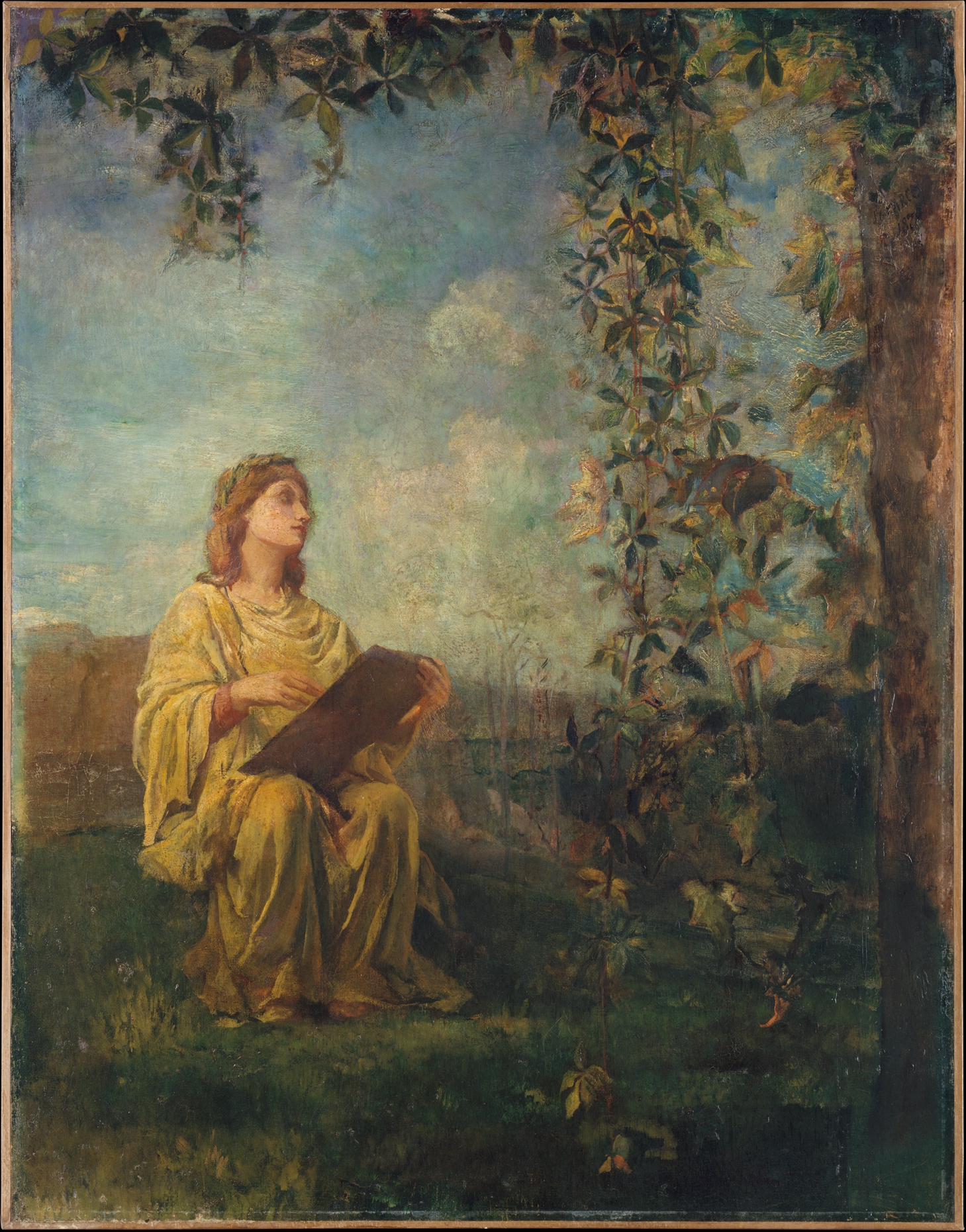The Muse of Painting
John La Farge American
By 1870, La Farge had moved away from his early realistic manner to a more decorative, academic style of easel painting. "The Muse of Painting" synthesizes the different and somewhat contradictory tendencies found in his work at this time. The landscape represents a site that artist painted frequently, the ridge behind Bishop Berkeley's Rock near his farm outside of Newport, Rhode Island. The figure belongs to the mainstream of nineteenth-century ideal painting, representing an allegory of the art of painting. In an odd twist, La Farge depicted the muse as an artist rather than as the inspiratrice of an artist. Her inspiration is the surrounding landscape of Newport, proving that nature is the true muse of painting. The landscape and overall composition are handled in highly decorative manner, mingling carefully observed details with dreamy, evocative colors.
Due to rights restrictions, this image cannot be enlarged, viewed at full screen, or downloaded.
This artwork is meant to be viewed from right to left. Scroll left to view more.




